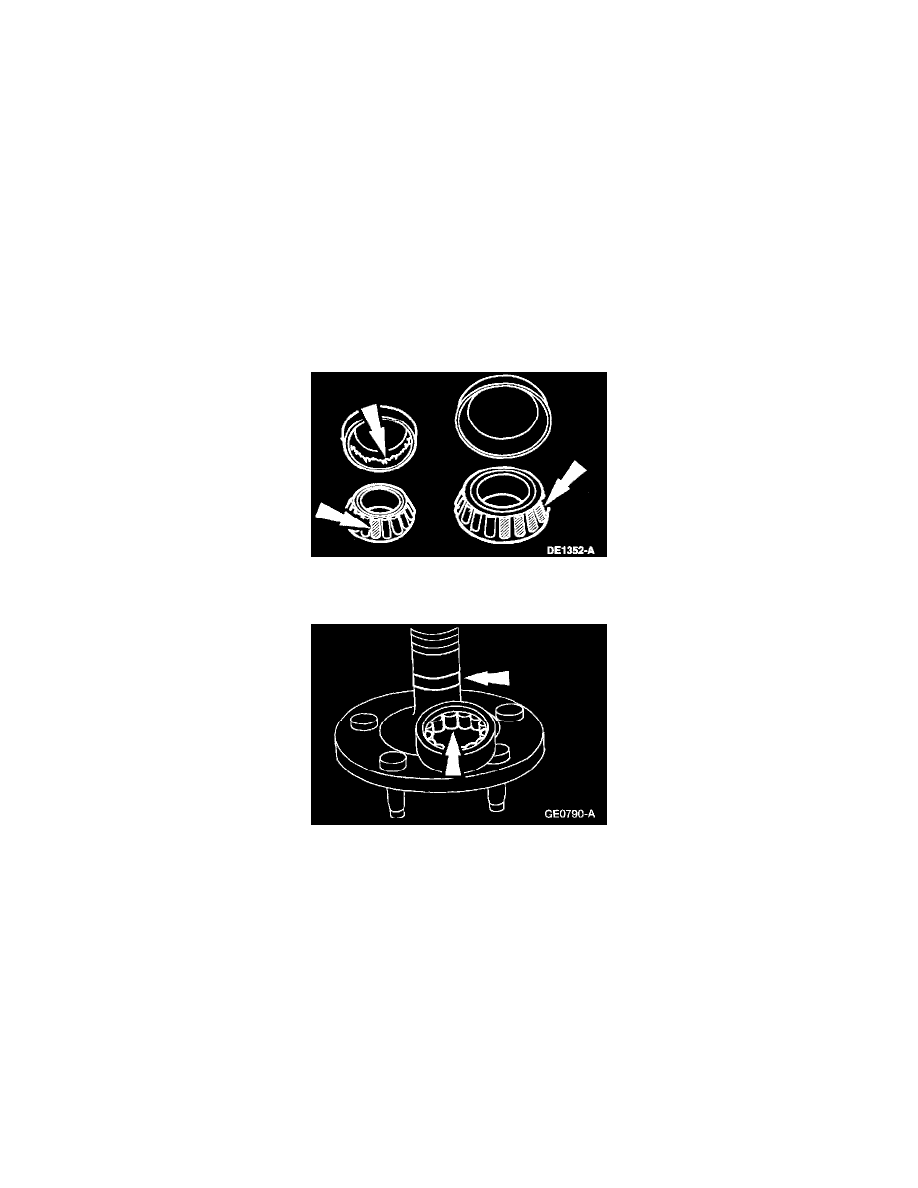Ranger 2WD V6-3.0L VIN U (1998)

NOTE: Before disassembling the axle to diagnose and correct gear noise, eliminate the tires, exhaust, trim items, roof racks, axle shafts and wheel
bearings as possible causes.
The noises described as follows usually have specific causes that can be diagnosed by observation as the unit is disassembled. The initial clues are the
type of noise heard during the road test.
GEAR HOWL AND WHINE
Howling or whining of the ring gear and pinion is due to an improper gear pattern, gear damage or improper bearing preload.
BEARING WHINE
Bearing whine is a high-pitched sound similar to a whistle. It is usually caused by worn/damaged pinion bearings, which are operating at driveshaft
speed. Bearing noise occurs at all driving speeds. This distinguishes it from gear whine which usually comes and goes as speed changes.
As noted, pinion bearings make a high-pitched, whistling noise, usually at all speeds. If however there is only one pinion bearing that is
worn/damaged, the noise may vary in different driving phases. Pinion bearings must not be replaced unless they are scored or damaged or there is a
specific pinion bearing noise. A worn/damaged bearing will normally be obvious at disassembly. Examine the large end of the rollers for wear. If the
pinion bearings original blend radius has worn to a sharp edge, the pinion bearing must be replaced.
NOTE: A low-pitched rumble normally associated with a worn/damaged wheel bearing can be caused by the exterior luggage rack or tires.
A wheel bearing noise can be mistaken for a pinion bearing noise. On 4x2 vehicles, check the wheel bearing for a spalled cup, and spalled/damaged
rollers. Replace the wheel bearing if any of these concerns are detected.
If the wheel bearing is damaged, the roller surface on the axle shaft may also be damaged. Replace the axle shaft if any damage is detected.
On 4x4 vehicles, check the wheel bearing for rotating smoothness and end play. Replace as required.
CHUCKLE
Chuckle that occurs on the coast driving phase is usually caused by excessive clearance between the differential gear hub and the differential case
bore.
Damage to a gear tooth on the coast side can cause a noise identical to a chuckle. A very small tooth nick or ridge on the edge of a tooth can cause the
noise.
Clean the gear tooth nick or ridge with a small grinding wheel. If the damaged area is larger than 3.2 mm (1/8 inch), replace the gearset.
To check the ring gear and pinion, remove as much lubricant as possible from the gears with clean solvent. Wipe the gears dry or blow them dry with
compressed air. Look for scored or damaged teeth. Also look for cracks or other damage.
